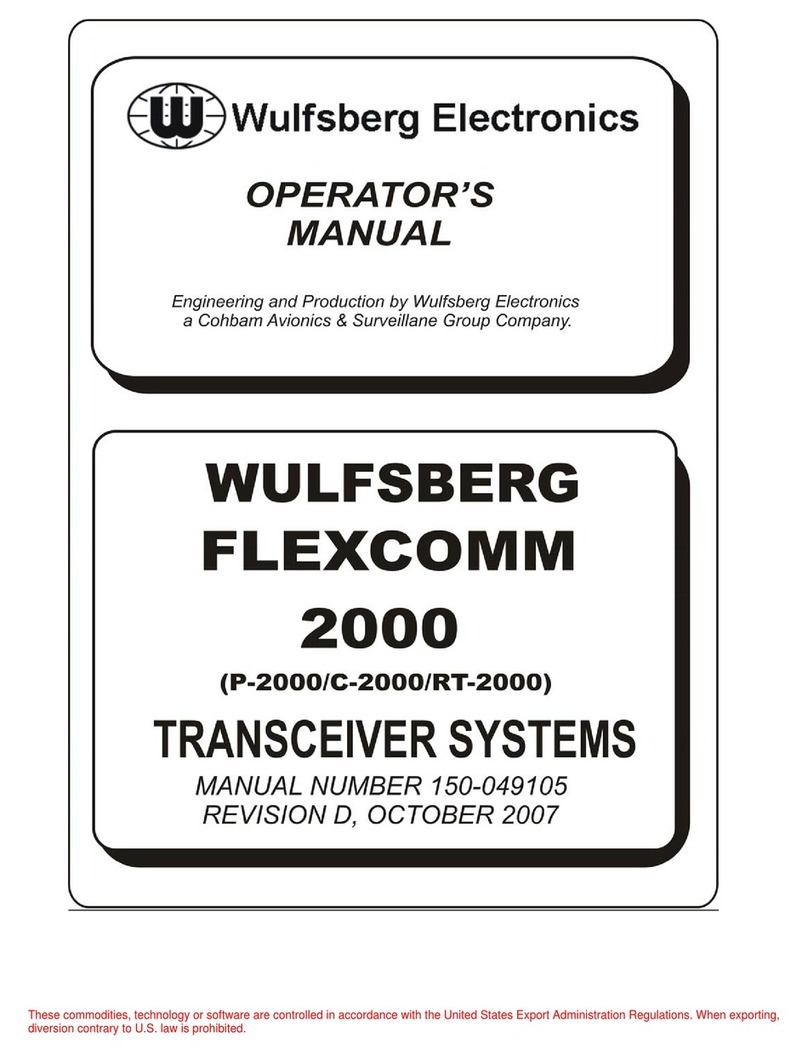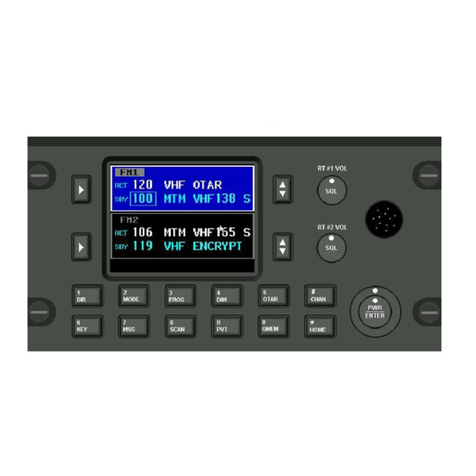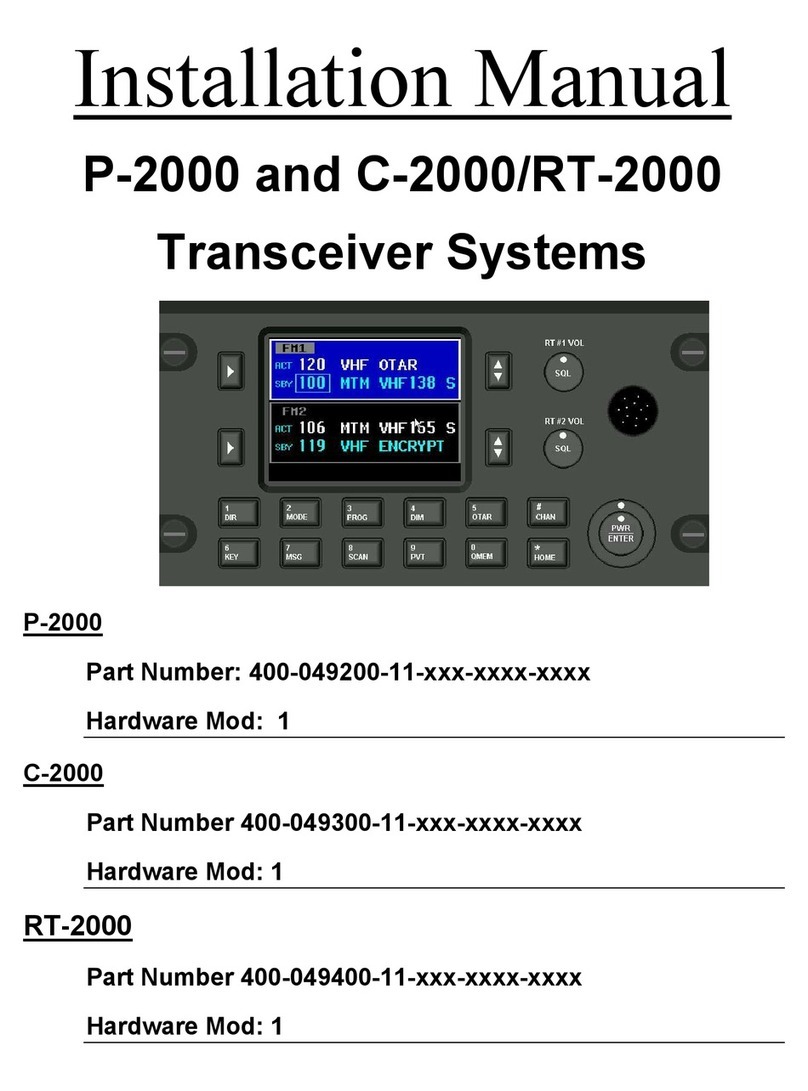
Wulfsberg Electronics P-2000 and C-2000/RT-2000 Operator’s Manual
Document 150-041102 Revision A Page 2 of 37
TABLE OF CONTENTS
INTRODUCTION .......................................................................................................................................................3
FEATURES ..................................................................................................................................................................3
TRANSCEIVER OVERVIEW ..........................................................................................................................................4
BASIC OPERATIONS................................................................................................................................................5
FRONT PANEL & CONTROLS.......................................................................................................................................5
KEYPAD BUTTONS......................................................................................................................................................6
THE HOME PAGE ........................................................................................................................................................7
SETTING THE DISPLAY BRIGHTNESS.........................................................................................................................10
SETTING THE VOLUME LEVEL ..................................................................................................................................10
SELECTING THE ACTIVE TRANSCEIVER ....................................................................................................................11
SELECTING A STANDBY CHANNEL USING THE CURSOR/TUNE KNOB .......................................................................12
SELECTING A CHANNEL USING THE KEYPAD ...........................................................................................................12
SELECTING A CHANNEL BY ALPHANUMERIC IDENTIFIER .........................................................................................13
USING THE DIRECT/REPEAT FEATURE......................................................................................................................13
RECEIVING/TRANSMITTING ......................................................................................................................................14
ENABLING/DISABLING TRANSCEIVERS.....................................................................................................................14
QMEM OPERATIONS ............................................................................................................................................15
MESSAGE PAGE......................................................................................................................................................16
PROGRAMMING/EDITING A PRESET CHANNEL .........................................................................................18
EDITING A PRESET CHANNEL ...................................................................................................................................19
CHANGING TRANSMIT POWER..................................................................................................................................19
ENHANCED SYSTEM FEATURES.......................................................................................................................20
RELAY MODE ...........................................................................................................................................................20
SIMULCAST MODE....................................................................................................................................................21
RELAY/SIMULCAST MODE .......................................................................................................................................22
REPEATER MODE......................................................................................................................................................23
XTS-EMULATION MODE ..........................................................................................................................................24
PHONE PATCH MODE ...............................................................................................................................................24
ENCRYPTION FEATURES ....................................................................................................................................25
TURNING ENCRYPTION ON AND OFF ........................................................................................................................25
SELECTING AN ENCRYPTION KEY.............................................................................................................................25
PERFORMING AN OTAR ...........................................................................................................................................26
LOADING ENCRYPTION KEYS ...................................................................................................................................28
ERASING ENCRYPTION KEYS WITH A KEYLOADER .................................................................................................29
CPS MODE ................................................................................................................................................................30
LOADING CHANNEL MEMORY..................................................................................................................................30
SYSTEM SETUP MODE .........................................................................................................................................32
MAINTENANCE PAGES ........................................................................................................................................34
FLASHPORT MODE....................................................................................................................................................35
DIGITAL POT TUNING MODE ....................................................................................................................................35
SOFTWARE VERSIONS DISPLAY PAGE ......................................................................................................................36
STEPS TO SUCCESSFUL SETUP AND OPERATION.......................................................................................37






























